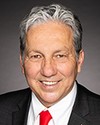Yes.
You have to understand that the order in which we place the questions in the context in which they are asked may have an impact on the answers given. In 2006, for example, the questions on language followed all of those on ethnocultural diversity, that is to say on immigrant status, citizenship, and so on. In 2011, the language questions migrated to the short form, as a result of which no questions on ethnocultural diversity preceded the language questions. That may have led people to respond differently.
Previously, when the mother tongue question was asked in isolation on the short form, we underestimated the unofficial languages in Canada by approximately 20%. However, when we put the mother tongue question at the very end of the questionnaire, people understood what we wanted to know, which was the first language learned at home as a child.




